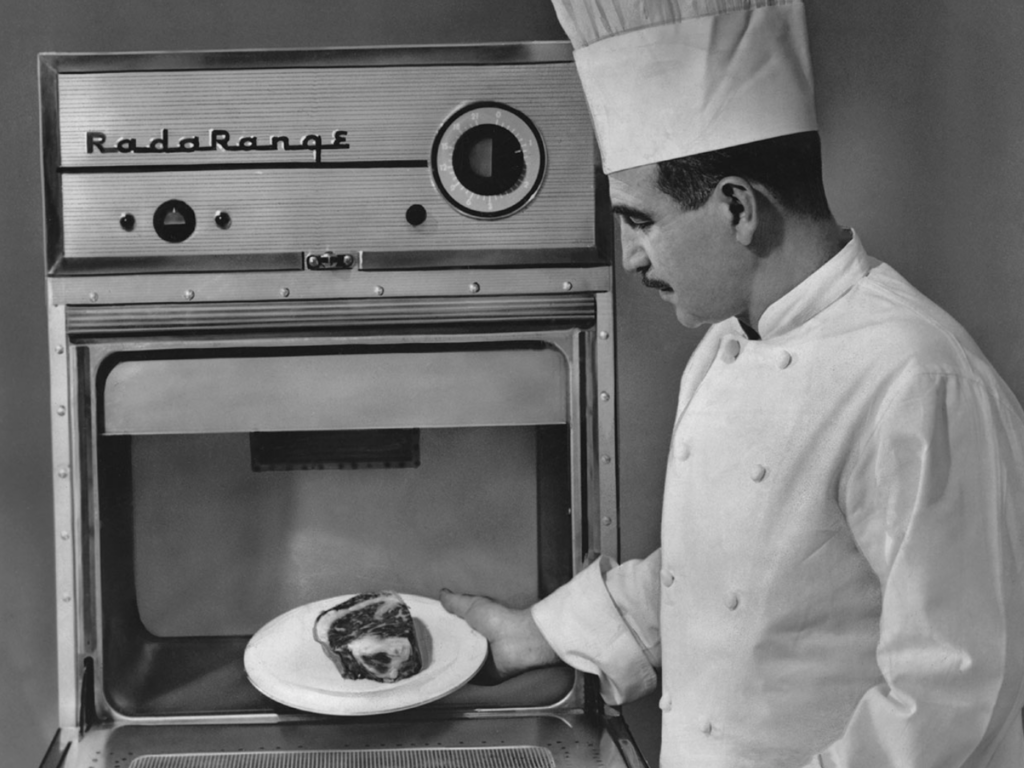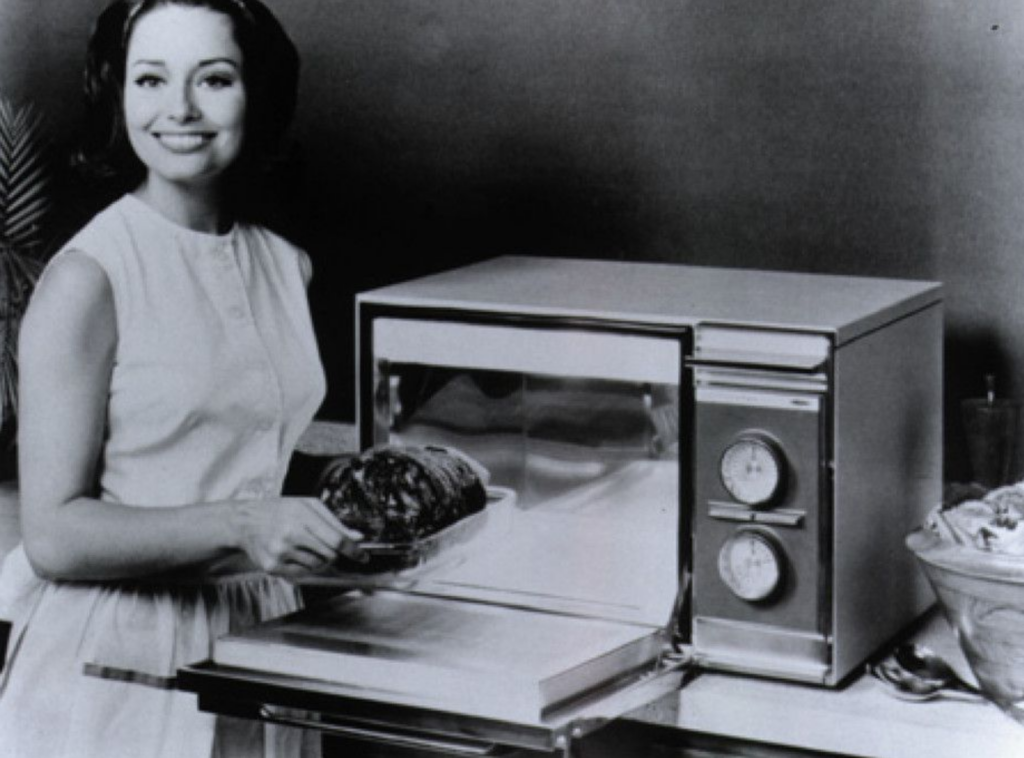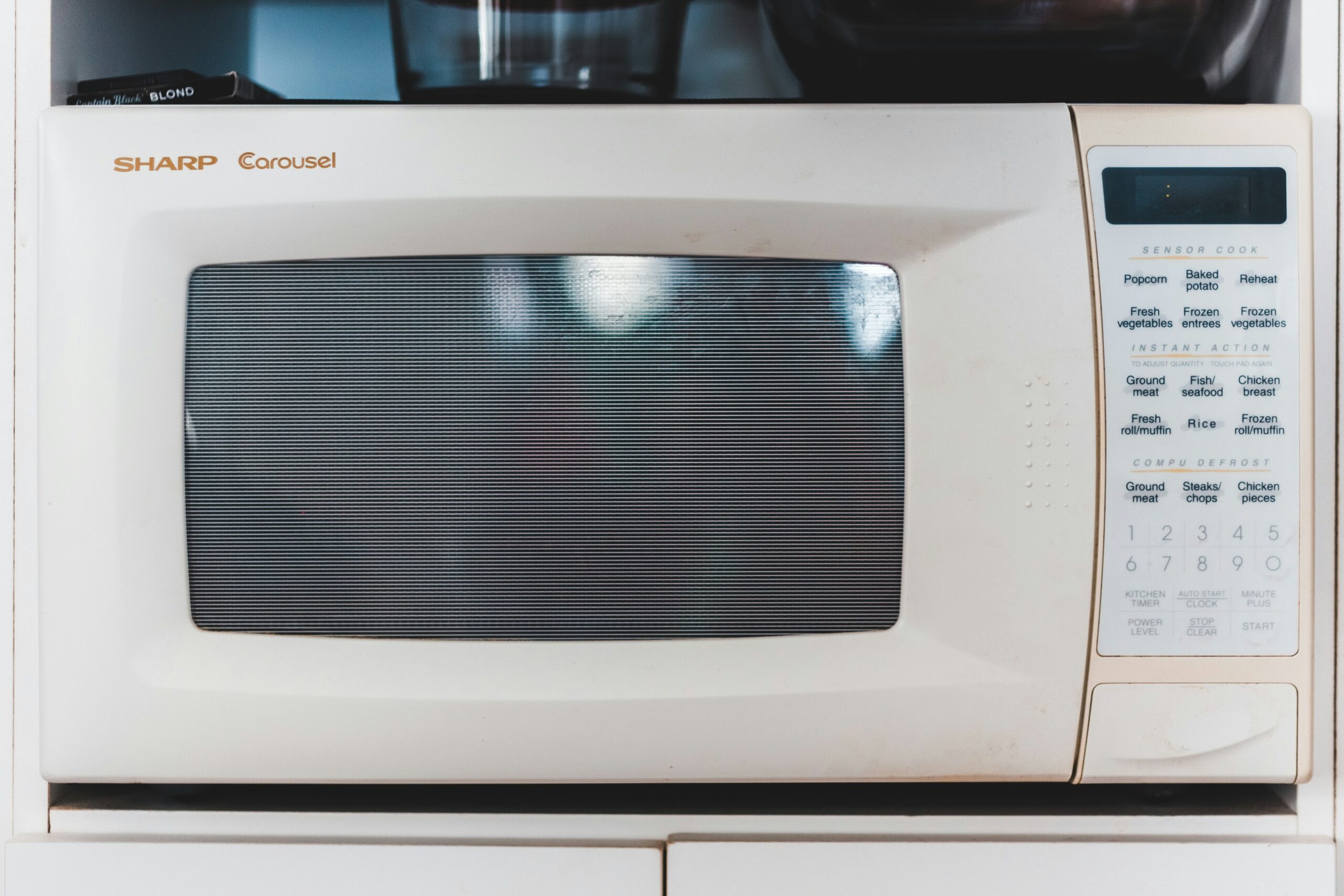Imagine accidentally inventing something that would change kitchens forever – all because of a melting snack!
Picture this: It’s 1945. World War II is raging, and Percy Spencer, an engineer at Raytheon, is working with a powerful military device called a magnetron. Just another day at the office, right? Wrong!
During his lunch break, Percy reached into his pocket for a peanut cluster bar and noticed something weird. The candy had turned into a gooey mess! Most people would’ve just cleaned up and grabbed a new snack. But not Percy. He was curious.
Being the scientific mastermind he was, Percy decided to test his suspicion. His method? Absolutely bonkers. He pointed the magnetron at an egg and watched in amazement as it EXPLODED from the intense heat. (Talk about a lunch experiment gone wild!)
Raytheon quickly realized they’d stumbled onto something revolutionary. By 1946 – just ONE YEAR after Percy’s delicious discovery – they released the first commercial microwave.
But here’s the hilarious part: This wasn’t your sleek, compact kitchen companion. Oh no! The first “Radarange” was:
- A whopping 750 pounds
- Standing 6 feet tall
- Requiring actual PLUMBING to cool down
- Costing a mind-blowing $28,000 in today’s money
Spoiler alert: It wasn’t exactly flying off the shelves. 😂

From Behemoth to Countertop Buddy 🏠🔬
Fast forward to 1954. Raytheon drops the 1161 Radarange, and it’s still a monster! Imagine walking into your kitchen and seeing something bigger and heavier than your refrigerator. And the price tag? Hold onto your wallets – $16,000 to $24,000 in today’s money! 💸
But wait, there’s more crazy details. This beast needed PLUMBING. That’s right – you needed a plumber to install your oven. Talk about high-maintenance kitchen tech!

How Microwaves Actually Work 🌊🔥
Ever wondered what magic happens when you hit that “Start” button? It’s like a tiny science party inside your microwave!
Here’s the cool science bit: A special electron tube called a magnetron creates microwaves that bounce around the metal interior. These waves are total party crashers for water molecules in your food. They make those molecules vibrate like they’re dancing at a wild molecular rave, creating heat that cooks your food.
Boom! Science in action! 🤓
The Journey to Your Kitchen 🏡
Patience was key. It wasn’t until 1967 – nearly TWO DECADES after its invention – that microwaves became kitchen-friendly. Amana’s Compact Radarange was the game-changer: affordable, compact, and ready to revolutionize quick cooking.
By 1971, prices started dropping, and suddenly microwaves went from industrial monsters to must-have appliances.
Mythbusting Microwave Rumors 🕵️♀️
Let’s clear up some microwave misconceptions:
Myth 1: Microwaves Zap All Nutrients
Nope! The FDA says microwave cooking doesn’t destroy more nutrients than conventional cooking. In fact, the quick cooking might help preserve more vitamins and minerals….but how many people are really not overcooking it?

Myth 2: Microwaves Cook from the “Inside-Out”
Another false alarm! While heat is produced inside the food, the outer layers are still primarily cooked by microwaves. The center gets heated by the warm outer layers.
The Dangerous Superheated Water Surprise 💦🔥
Here’s a wild safety tip: Most microwave injuries happen from something called “superheated water”. Imagine water heated beyond its boiling point, looking calm but ready to EXPLODE with the slightest disturbance. One wrong move, and you’ve got a scalding water volcano!
The Microwave: From Military Mistake to Kitchen Miracle 🌍🍽️
Who knew lunch could change the world? From a melting peanut cluster to a device in 90% of American homes, the microwave is proof that sometimes the best inventions happen by pure accident!
Bon appétit, science lovers! 🚀


